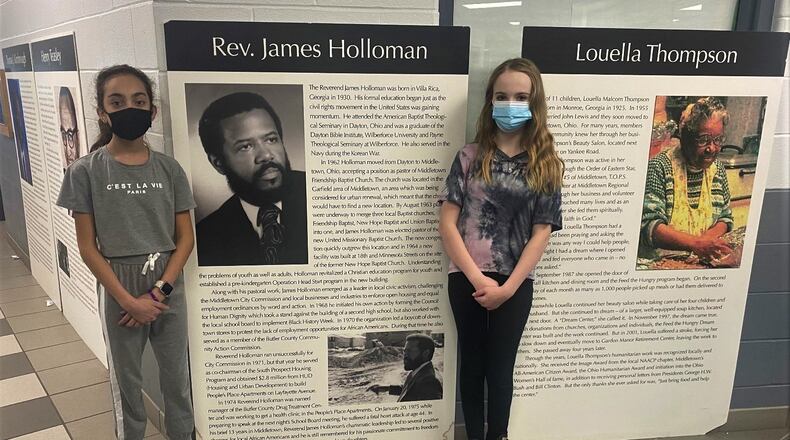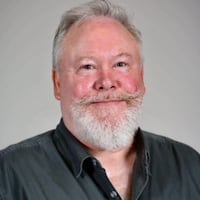While some schools elsewhere often default to only focusing on nationally famous Black leaders during the month celebrating Black history, a home-grown heroes approach is more relatable, said Highview Language Arts Teacher Anedra Million.
“Pioneers can start in any generation and in any community,” said Million, who has doctorate in education and was a co-coordinator for the Black History Month project.
The placement of the large posters, which stand about eye-level to students and features photos and bios for each of the 16 local heroes, was a move to make the display an “educational moment for the students” as they pause during the class day to read the portraits.
And the display is part of an “educational scavenger hunt” where students apply what they have learned about the historical figures and then apply that information to what they learn about their Middletown community.
“For example the Robert “Sonny” Hill Community Center … the kids know and some of them go to the community center and then they have the opportunity to learn about Hill and what he has given to the community,” said Million, a former principal and veteran educator with the city schools.
“And then kids talk about ways that they can become trailblazers in their community and that’s how you make it (Black history) come to life.”
Hill served 11 years on Middletown City Commission and was the city’s first Black mayor, elected in 2001. He died on June 21, 2004 and the community center on Lafayette Avenue is named in his honor.
Among other famous figures featured in the exhibit are Rudolph Pringle, who is described in his portrait as being “raised by his mother and maternal grandmother, Evangelist Minnie Thornton, who instilled in him the desire to serve God and humanity.
“He and his siblings had a gospel quartet called “The Pringle Quartet,” that traveled throughout the country and performed on radio. Bishop Rudolph Pringle is known for being “a force to be reckoned with.” He has fought for equal rights for ALL people both black and white. He has tirelessly given everything that God has put in him to help serve mankind. He is a true legend and trailblazer for Middletown.”
And Middletown’s Rev. James Holloman, “who is known for his civic activism, challenging the Middletown City Commission and local businesses and industries to enforce open housing and equal employment ordinances by word and action.”
According to his display bio: “In 1968 he instituted the his own action by forming the Council of Human Dignity which took a stand against the building of a second high school, but also worked with the local school district to implement Black History Week. He was also instrumental in merging several local Baptist churches, Friendship Baptist, New Hope Baptist and Union Baptist, into one, and James Holloman was elected pastor of United Missionary Baptist Church.”
Million said the local focus works with youngsters.
“We hear all about all the people who are national heroes but we wanted them to see the contributions that are made by African Americans that maybe some of them (students) may be related to or that their families know.”
About the Author

